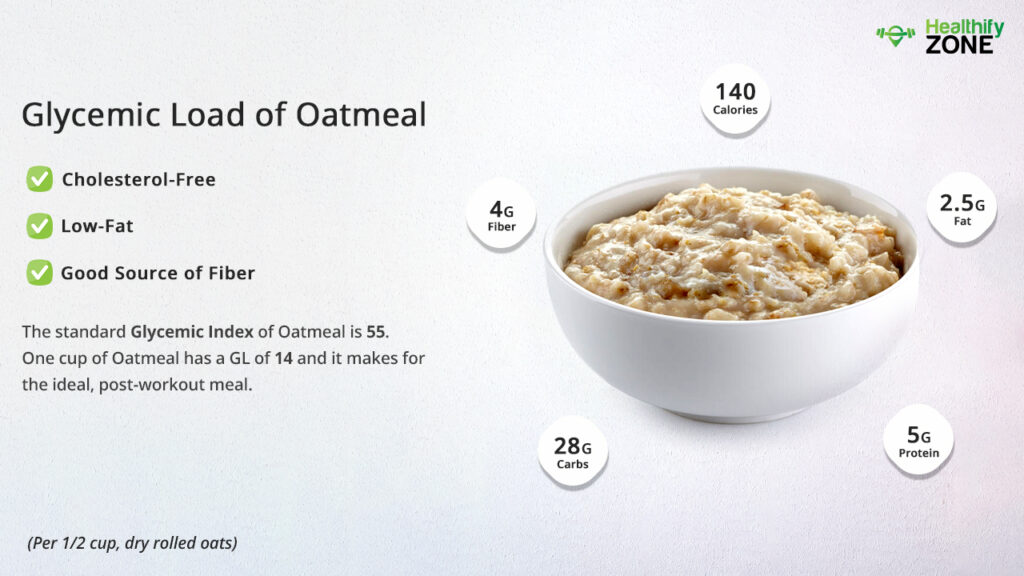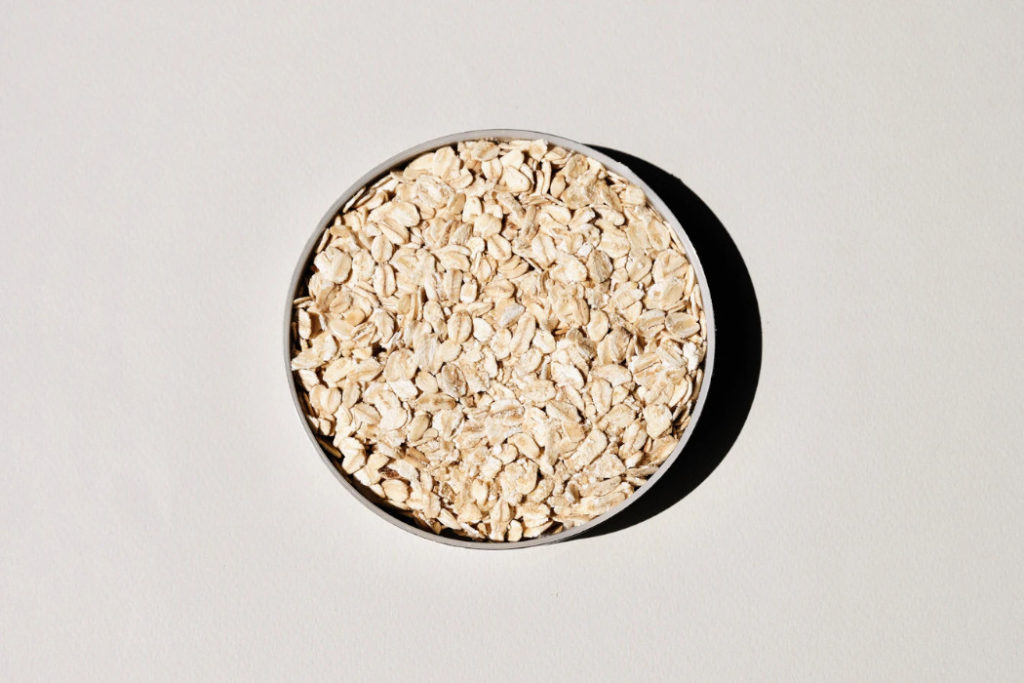The measure of the carbohydrate content of the food and the rapidity with which it increases the blood glucose levels is called the Glycemic Load. A simple way of making healthy diet choices is following the Glycemic Index. It helps compare and inf alternative sources of nutrients in terms of blood glucose levels. Glucose represents a higher blood glucose response as compared to fructose.
Oats is a whole-grain cereal. It is especially nutritious, a great source of fiber, particularly beta-glucan, and is high in vitamins, minerals, and antioxidants. It has a very unique antioxidant, which is believed to protect you against heart diseases. According to the International GI Tables, the Glycemic Index of oats is 55, while that of Instant oats is 79. Oats are most commonly crushed or rolled and can be eaten as a porridge or in some baked goods.

Oats are loaded with nutrients like
- Fiber
- Phosphorous
- Thiamine
- Magnesium
- Zinc
- Manganese
- Copper
- Vitamin B1
- Selenium
- Iron
How to Calculate Glycemic Load of Oats?
The standard Glycemic index of Instant oats is 79 while that of oats is 55. The high glycemic index of the fruit helps in reducing the risks related to cardiovascular diseases. If we want to talk about diet, the key to prevent diabetes or any chronic illness is to distribute the carbohydrate consumption content throughout the day and manage the sugar levels in the body correctly—however, the glycemic load for one cup of instant oatmeal is 14 approximately which makes it an extremely favourable food to be consumed after workout.
The Formula/Procedure For Calculation of Glycemic Index of the Oats :
GL = GI * carbs / 100
where
- GL – glycemic load;
- GI – glycemic index;
- and carbs – the amount of carbohydrates in the portion.
| SL.NO | OATS BY WEIGHT IN (g) | GLYCEMIC LOAD |
| 1. | 100 g of Oats | 33 (high) |
| 2. | 100 g of Instant Oatmeal | 9.5 (low) |
| 3. | 100 g of Rolled Oats | 37 (high) |
| 4. | 100 g of Oat Bread | 24 (high) |
| 5. | 1 Cup of Instant Oatmeal (150 g) | 14 (medium) |
| 6. | 1 Cup of Oats (150 g) | 49.5 (high) |
Are Oats Safe to Consume If You Have Diabetes?
Oats can be very helpful in the prevention of type-2 diabetes. Beta-glucans is a form of soluble fibers present in oats that have shown benefits for blood sugar control. A good amount of beta-glucans, as found in oats will help moderate both insulin and glucose response after a carb-rich meal. Boiled whole oats result in low glucose and insulin response, but the response increases when the oat is ground into flour before cooking.
Can I Eat Oats During a Fat-Loss Diet?
You can eat oats on a strict fat-loss diet. If you are looking for good results, you should avoid having more than 1 cup of instant oatmeal in one serving.

- A cup of instant oatmeal has a GL of 14 which is in the permissible levels.
- 100 g of oat bread or rolled oats is something which shoud be taken rarely if you are on a fat-loss diet.
Can I Eat Oats During a Low-Carbohydrate Diet?
You can eat oats on a strict low-carb diet. However, the portion size of what you consume is something that you need to take into account. We suggest you not consume more than 100 g of oat per serving.
Are Oats High in Sugar?
Oats is 66% carbs and is very low in sugar, with one 1% coming from sucrose. So, essentially oats is a great option if you are looking to minimize sugar in your diet.
Oats is one of the most healthy grains available and is a good source of vitamins, minerals and important plant compounds. It has beta-glucans that have various health benefits. It is very filling and reduces appetite too.